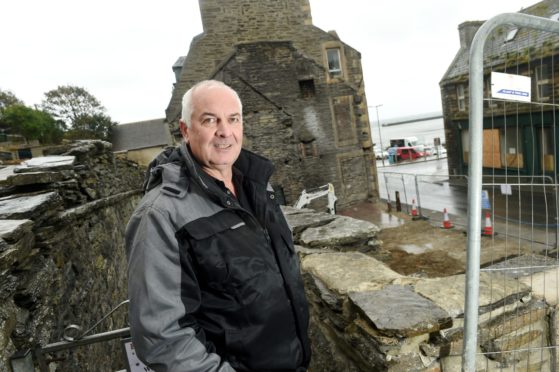A proposal to divide the Highlands into localised restrictions to control the spread of Covid-19 failed to get off the ground as councillors voted against the idea.
The suggestion was dismissed by consensus at a special meeting yesterday, with some councillors cautioning against the unintended consequences of sub-dividing the region.
Earlier, council leader Margaret Davidson told the P&J she wanted to see if variation was an option.
She said: “Look at the size of Highland. Lochaber itself is bigger than some local authorities.
“We have to ask if there is scope for variation within Highland, if we think that’s the best for our local communities if we have a local outbreak.”
Councillor Jimmy Gray said the fallout from such a move could be wide-ranging.
He said: “We rely a lot in our economy on people coming from outwith Highland to do a lot of the work here.”
But Caithness councillor Raymond Bremner said he would consider localising the tier system further to protect communities.
“Given the considerable geographic spread and the variable nature of settlement patterns and travel destinations within the Highland area – especially if you consider the winter destinations and all-year tourist attractions in Badenoch, Strathspey and Lochaber and staycation accessibility to those from other more infected areas – I personally would consider localising the tier system further to protect the health and wellbeing of individual communities.”
Highland is likely to fall into Tier 1 in the Scottish Government restrictions to be announced today.
Councillors were called in at short notice yesterday to discuss questions around the restrictions to be fed back urgently to the government.
The socialising and travel aspects of the restrictions divided opinion between rural and urban councillors, with many rural members expressing fears for the mental health of their constituents if they are unable to socialise indoors during winter.
Tier 1 permits six people from two households to socialise, both indoors and outdoors.
The councillors pointed out that indoor visiting is vital to Highland communities, and outdoor socialising will be impossible in winter conditions.
They spoke of the levels of loneliness they are already finding amid their older constituents who are struggling with the current indoor mixing restrictions.
The councillors voted overwhelmingly in favour of Highland conforming fully to Tier 1 restrictions.
The issue of seeking travel restrictions from areas at Tier 3 and above divided the councillors closely, with 30 votes in favour of the proposals, and 28 against.
Some rural councillors pointed out that despite the massive influx of tourists this summer, the infection rates did not rise.
Lochaber representative Andrew Baxter said: “We didn’t see an increase in virus in summer months, but prevalence across whole of UK was a lot less than now.”
Both he and Mr Bremner pushed for improved testing in Highland.
Mr Bremner said: “If we are to realise an effective programme of control we must have a robust testing system that supports our efforts.”
The councillors agreed that clarity and clear communication was the key to the success of the restrictions.
